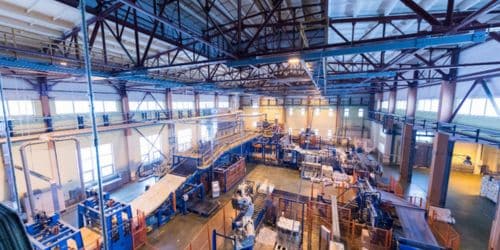A rising number of producers need to utilize reused materials and make creation processes more eco-accommodating, which is empowering. A stable demand for greener products and the creation of the circular economy we so urgently require can only be achieved through a united commitment to use recycled materials as opposed to virgin raw materials in production processes, just like you can find great selection of used Volvo FH.
How Producers are Joining to Construct a Round Economy
Starting from the beginning of the modern insurgency, we have gotten into a straight economy that produces, makes waste, disposes of, and fabricates once more. The creation of a waste-free circular economy is our objective. Reusing recently involved materials in new items is a vital forward-moving step to a roundabout economy.
Instead of simply repurposing their own production waste, manufacturers are considering recycled materials as they explore and produce products in order to establish a global circular economy. When we, as manufacturers, incorporate recycling into both our production and waste management, we create new products that reflect innovative approaches to repurposing corroded components and materials.
How Manufacturing Companies Are Using Recycled Steel in Their Processes
My area of expertise is recycled steel that is made using electric arc furnace technology. It is an ideal material for practical turn of events and an ideal illustration of the round economy we call reusing. This is because steel can be recycled indefinitely. Products made of steel that have reached the end of their useful lives can be reintroduced into the supply chain to be remade into steel repeatedly, so there is no need to dispose of old automobiles or appliances in a landfill.
As a result of its recyclable properties, steel is a material of choice for expanding quantities of end-clients, who are going to reuse steel to assist them with meeting their ecological plan objectives. Steel made with reused ferrous pieces as its essential unrefined substance can be utilized, conversely, with steel produced using virgin materials for practically all applications, like iron metal and coking coal.
We have sharpened our assembling interaction to consolidate reused steel at a pace of 98%. Our utilization of reused steel additionally diminishes fossil fuel byproducts in more ways than one. The amount of carbon emissions produced per ton by using electric arc furnace technology is significantly less when compared to the production of steel from raw materials. During the interaction, 97% of water is reused, and 99.9% of residue is caught and reused. Moreover, we limit our CO2 outflows by obtaining and delivering salvaged material within a 500-mile span.
Makers are Pushing Toward a Roundabout Economy
As the reasonable advancement keeps on developing, the pattern of producers utilizing reused materials is moving momentum. Mounting strain from local area partners, government authorities, investors, clients, and representatives to source materials dependably is convincing producers to analyze their cycles and make eco-accommodating changes.
In our direct economy, modern cycles are planned around virgin materials. Along these lines, utilizing reused materials frequently prompts tangles in a producer’s value chain. In any case, when we carve out an opportunity to change our creation processes, we track down the worth in utilizing recuperated materials. Finding this worth lifts the boundless drive to recuperate materials and decreases costs. For this reason we should advance up-cycling during the early plan process.
Conclusion
We must change the supply chain, redesign products, and create consumer demand for sustainable products in order to build a circular economy.






